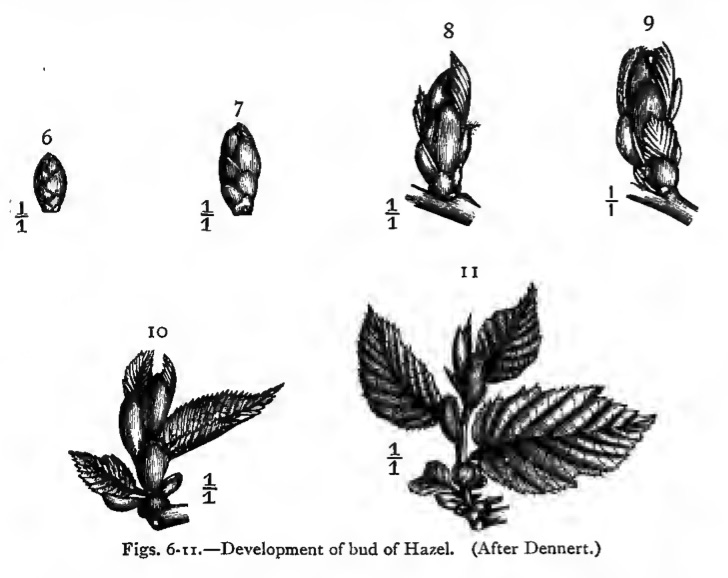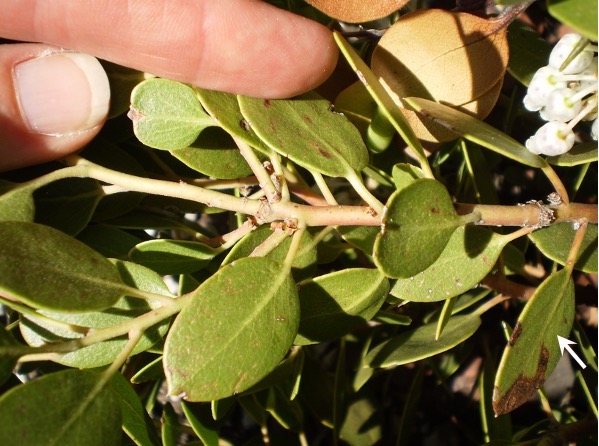Overview
This lesson covers four families of plants. These families have very different characteristics. Many of the dominant shrubs of chaparral are included in these families. The families you will learn here are:
The Rosaceae (the rose family)
The Rhamnaceae (the buckthorn family)
The Ericaceae (the heath family)
The Fagaceae (the oak family)
Evergreen vs deciduous species
When keying out species in these families (and others), you may be asked if the plant is evergreen or deciduous. You do not need to watch the plant all year to see if it drops its leaves. You can look at a branch to see if the leaves are ONLY on the current year's growth (suggesting that all leaves were dropped before the beginning of the current growing season) or if leaves are still attached to older parts of the stem (parts that grew last year or the year before). If they are still attached to last year's growth, the plant has had leaves on it all year, and is evergreen.
To determine when different parts of a branch were produced, look for bud scales or bud-scale scars. Bud scales are small, scale-like leaves that cover and protect the apical meristem during harsh periods when the branch is not growing. Bud scales may be produced to cover the apical meristem at the tip of a branch (forming a terminal bud). They will also protect non-growing apical meristems in the axils of leaves, forming axillary buds. The image below shows an axillary bud beginning growth in the spring and producing a new branch.

Note that the bud scales are crowded. They are modified leaves, and the internodes between them are very short. Therefore, when they fall off, they leave scars that are much closer together than the scars of ordinary leaves; they form what looks like a ring of bud-scale scars. Identifying rings of bud-scale scars will tell you where growth stopped after one growing season and began again during the following growing season.
Below are illustrations of dormant twigs (from Gray 1887). Obviously, these species are deciduous: they have dropped all of their foliage leaves.
Check your understanding:

